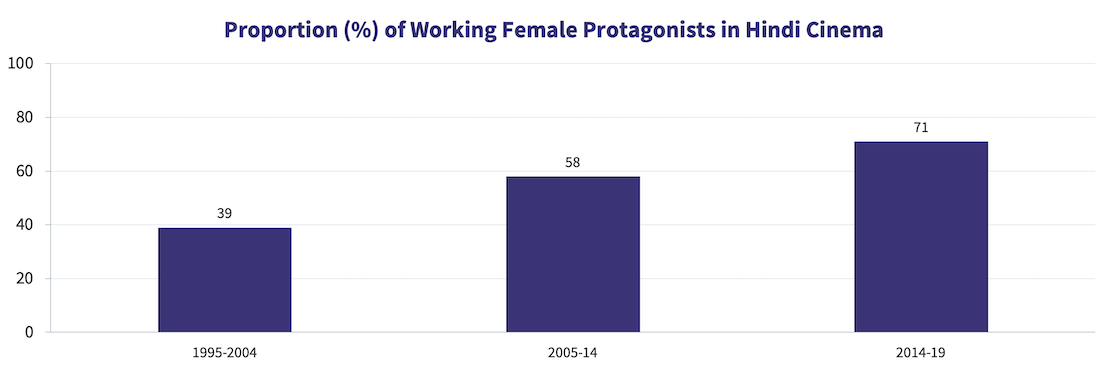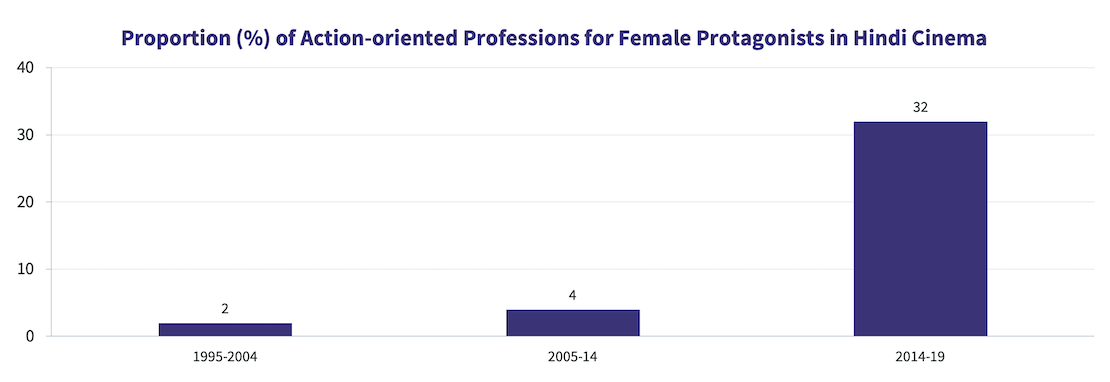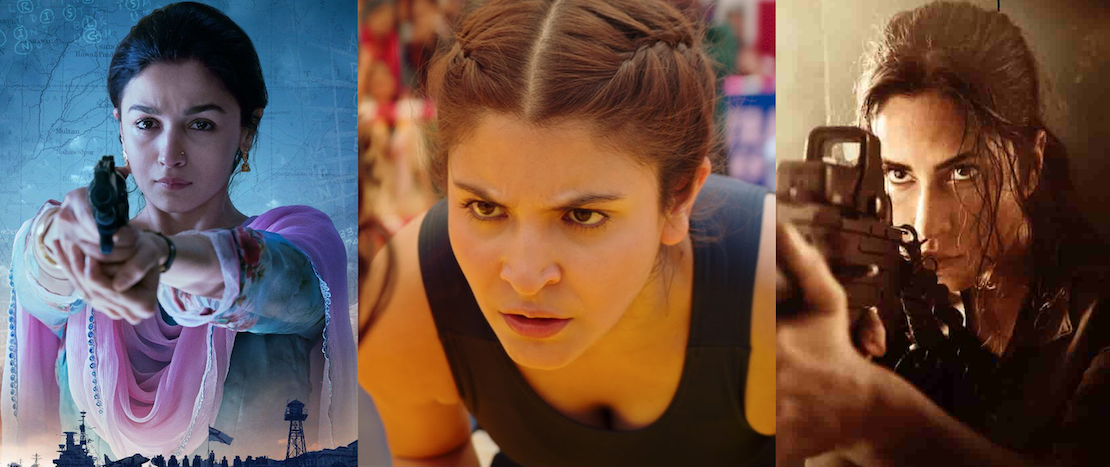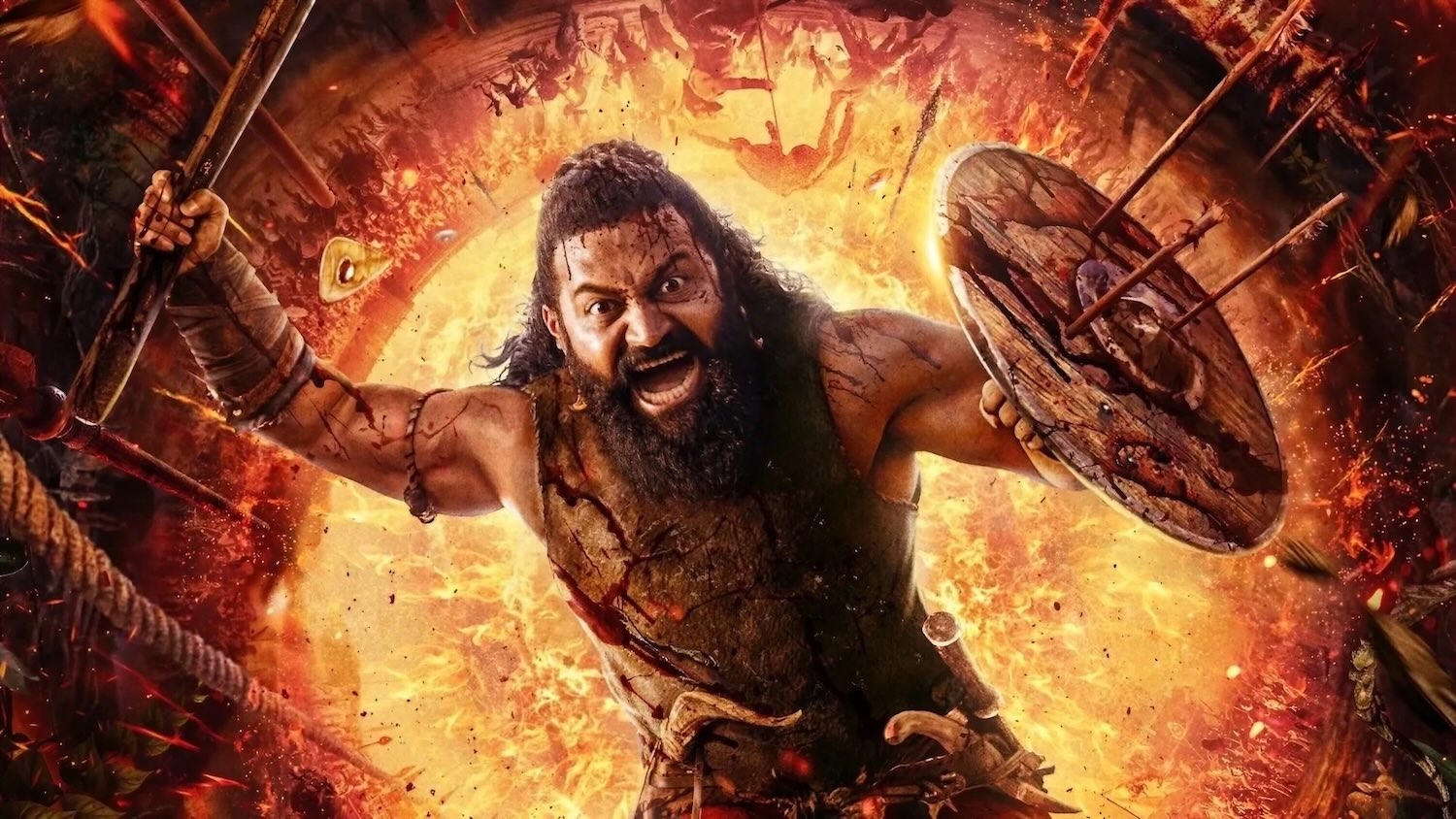


By Mitesh Thakkar, Gautam Jain
The debate on pay inequality, and on better representation for women in Indian cinema, has been in the news over the last few years. Good box office performance of films headline by female actors has also been a topic of discussion in the film trade over the last decade. In this context, we wondered whether Hindi cinema has addressed concerns around typecasting of its female protagonists. Because after all, if there’s no material change in actual content, the social conversation around it will eventually be lip service at best.
So, we set out to understand the portrayal of the female protagonists in Hindi cinema, from a simple but important lens: What kind of professions are female protagonists given in our films, and has it evolved over the years?
We looked at top 50 Hindi films for each five-year period from 1995 to 2019, based on box office footfalls, i.e., a total of 250 successful Hindi films over two and a half decades. All female protagonists in these 250 films were assigned professions based on their character in the film. The list ranged from generic 'professions' like college student, businessman, homemakers to more specific ones like archeologist, chef or spy. These professions were clubbed under clusters such as corporate jobbers, criminals, creative professionals, policewomen, politicians, etc.
The analysis reveals some interesting findings. Over the last 25 years, there has been a significant increase in the percentage of working (i.e., earning) female protagonists in Hindi films. From 39% in the late 90s to 71% in the 2014-19 period, this shift is reflective of the evolving portrayal of female lead characters in Hindi cinema.

Evidently, Hindi cinema has adapted over time to represent the change in society’s outlook towards women. This shift has also been boosted by the growth of multiplexes in urban centres, which has led to higher proportion of footfalls from women audience.
Importantly, the positive trend is not just limited to higher share of working female protagonists compared to the past, but also extends to the type of professions being written for female protagonists. Professions that were earlier reserved for male protagonists are now extending to female protagonists too. One such category of professions can be labelled “action-oriented professions”, i.e., police, spy, warriors & sportspersons.

These professions had virtually no representation from female protagonists till 2014. But since then, there has been a dramatic jump in these professions, as seen in the chart above. Characters like Sehmat (Razi), Zoya (Tiger Zinda Hai), Aarfa (Sultan), Geeta & Babita (Dangal) and Devsena (Bahubali 2: The Conclusion) are some examples of this group.

In the 80s and the 90s, the heroine’s role was largely limited to that of the hero’s love interest, either as the girlfriend or the wife. Other familial roles like sister and mother had some representation, both there was little to explore outside the home. The findings of our analysis should come as good news to those advocating more meaningful portrayal of women in Hindi cinema. It may not be enough, but there has been a definite positive shift in how female characters are being written over the last few years, especially in terms of them carrying professional heft. Slowly but surely, the heroine is making her presence felt in our films.

The India Box Office Report: October 2025
Driven by Kantara - A Legend: Chapter-1, October 2025 has emerged as the highest-grossing box office month of the year at the India box office, with gross collections of ₹1,669 Cr

Venn It Happens: SVOD & Theatrical audience intersection
The second edition of our new feature Venn It Happens illustrates the intersection between SVOD and Theatrical audiences in India, using data from Ormax Media's industry reports

Ormax Cinematix's FBO: Accuracy update (October 2025)
This edition of our monthly blog summarises Ormax Cinematix's box office forecasts (FBO) for all major October 2025 releases vis-à-vis their actual box-office openings
Subscribe to stay updated with our latest insights
We use cookies to improve your experience on this site. To find out more, read our Privacy Policy